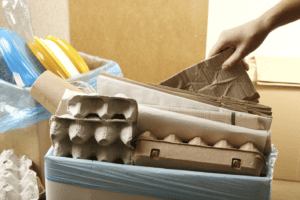Effective Waste Sorting Practices for Homes and Businesses

Waste management is more than just a daily chore or a business requirement; it’s a step towards a sustainable future. As our environmental consciousness rises, so does the importance of correctly sorting our waste. Not only does proper waste sorting help reduce the strain on our landfills, but it also maximizes the potential of recyclable materials and reduces pollution. Here’s how homes and businesses can improve their waste sorting practices for maximum efficiency and environmental impact.
1. Understand the Basics:
Before you can effectively sort waste, it’s essential to understand the different categories:
- General Waste: Typically non-recyclable materials, often destined for landfills.
- Recyclables: This includes paper, cardboard, certain plastics, glass, and metals.
- Organic/Bio-Waste: Kitchen scraps, garden waste, and other compostable items.
- Hazardous Waste: Batteries, certain cleaning agents, electronic waste, etc.
2. Set Up Separate Bins:
For homes:
- Have clearly labeled bins in the kitchen or utility area: one for general waste, one for recyclables, and if possible, one for organic waste.
- Consider a smaller container for hazardous waste items to be disposed of correctly.
For businesses:
- Larger bins can be set up in communal areas, with smaller bins at individual workstations.
- Ensure bins are available near printers for paper waste and in pantries or kitchens for organic waste.
3. Educate and Inform:
- For Families: Regularly discuss the importance of waste sorting during family meetings. Place informative stickers on the bins to make sorting easier.
- For Employees: Hold periodic workshops or training sessions. Use posters, emails, or internal communications to reinforce waste sorting guidelines.
4. Go Digital:
- For Homes: Opt for electronic bills, subscriptions, and communications to reduce paper waste.
- For Businesses: Encourage digital file sharing, double-sided printing, and online collaboration tools to minimize paper usage.
5. Reduce Contamination:
- Rinse Before Recycling: Ensure containers, bottles, and cans are free from food residue before tossing them in the recycling bin.
- Bag It Right: Use compostable bags for organic waste and regular bags for others. This ensures that the waste process doesn’t get hampered at the treatment facility.
6. Conduct Regular Audits:
- For Homes: Periodically check the contents of your bins to ensure correct sorting and identify areas of improvement.
- For Businesses: Schedule monthly or quarterly waste audits. Review waste management practices and identify ways to reduce, reuse, and recycle more effectively.
7. Collaborate with Waste Management Providers:
Engage with your waste removal company. They can offer insights, solutions, and services tailored to your specific needs, be it for homes or businesses.
8. Lead by Example:
- For Parents: Children often learn by observing. By practicing diligent waste sorting, you instill these values in the next generation.
- For Business Leaders: Implementing and adhering to waste sorting practices at the top encourages employees to follow suit.
Conclusion:
Effective waste sorting is a shared responsibility that has a ripple effect on our environment, economy, and future. While it might seem like a small step, collectively, our efforts can lead to significant change. Whether you’re running a household or a business, your commitment to proper waste sorting practices contributes to a larger global effort towards a cleaner, greener planet.
Embrace the change, and let’s work together for a waste-wise future!
